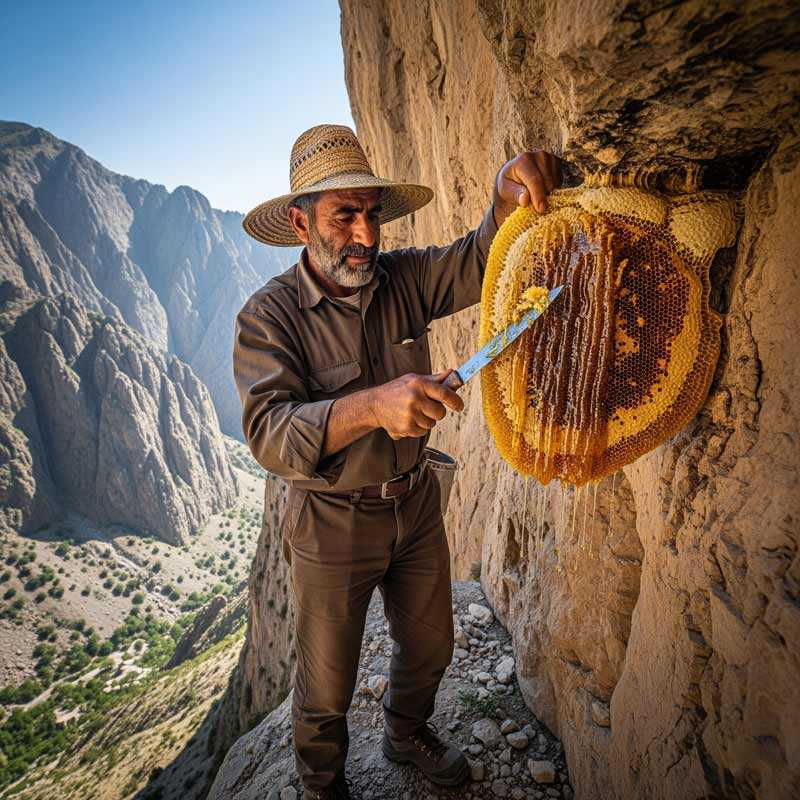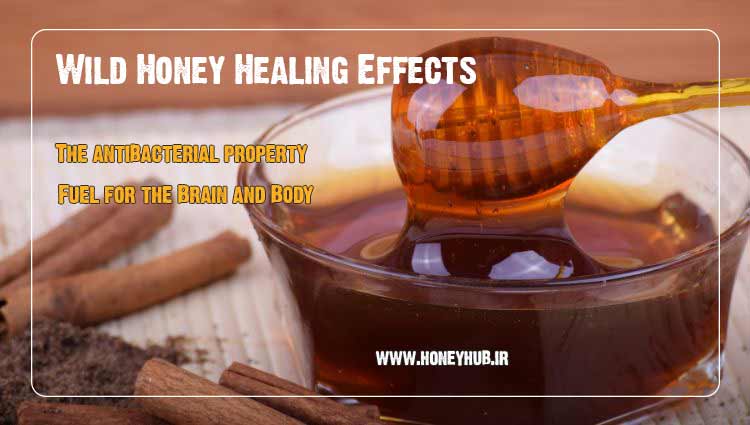پنیر موزارلای شما کش نمیآید یا میسوزد؟ راز آن در علم نهفته است. از فرآیند پاستا فیلاتا تا نقش «کهنگی» و قندها در...

گنجِ رامنشده
سفری به دنیای عسل وحشی، جایی که هر قطره، عصارهی کوهستان است.
بعضی چیزها را نمیتوان تولید کرد؛ باید کشف شوند. در دنیایی که همه چیز در مقیاس انبوه تولید میشود، طبیعت هنوز گنجهایی دارد که تنها به دست جسورترین و صبورترین افراد کشف میشوند. عسل وحشی یکی از همین گنجهاست؛ نه یک محصول، که یک «رویداد» است. رویدادی که با رقص زنبورها بر فراز گلهای خودرو آغاز و با فداکاری یک انسان بر لبهی یک صخره به اوج خود میرسد.
این داستان «محمد نور» است، مردی که زبان کوهستان را میفهمد، و نوهاش «بهروز» که در هیاهوی شهر، در آستانه فراموش کردن این زبان است. این داستان تفاوت میان «داشتن» و «بدست آوردن» است.
دو قطره، دو دنیا: افسانه و واقعیت
عسل وحشی (گنج طبیعت)
- منشأ: آفریدهی زنبورهای آزاد در صخرهها و درختان کهن.
- تغذیه: شهد صدها گل و گیاه دارویی و وحشی. یک ارکستر کامل از طعمها.
- جوهر: خام، زنده و سرشار از آنزیمهای فعال و گردههای گل.
- رنگ و طعم: پیچیده، عمیق و غیرقابل تکرار. شناسنامه یک منطقه.
عسل تجاری (محصول قفسه)
- منشأ: محصول زنبورهای پرورشی در کندوهای یکشکل.
- تغذیه: شهد مزارع تککشتی یا شربتهای شیرین مصنوعی.
- جوهر: حرارتدیده (پاستوریزه)، فیلتر شده و فاقد آنزیمهای حیاتی.
- رنگ و طعم: یکنواخت، ساده و قابل پیشبینی. شیرینی بدون داستان.

«پدربزرگ میگفت دود برای زنبورها حکم یک پیمان را دارد. به آنها میگوییم ما برای غارت نیامدهایم، آمدهایم تا سهممان را از این سفره برداریم. اگر به این پیمان خیانت کنی، کوهستان دیگر هرگز به تو اعتماد نخواهد کرد.»
— خاطرات بهروز از اولین همراهی با محمد نور
علم چه میگوید؟
عسل وحشی خام یک «داروخانه زنده» است. آنزیم گلوکز اکسیداز که توسط زنبور به عسل اضافه میشود، در تماس با رطوبت بدن، به آرامی پراکسید هیدروژن (یک ضدعفونیکننده طبیعی) آزاد میکند. این همان قدرتی است که در عسلهای پاستوریزه با حرارت برای همیشه نابود میشود.
مطالعه بیشتر...چگونه گنج واقعی را تشخیص دهیم؟
در بازاری که پر از تقلید است، شناختن اصل، یک هنر است. به حواس خود اعتماد کنید:
- کریستالیزاسیون (شکرک زدن): این نشانه حیات است، نه نقص. عسل خام و زنده به دلیل داشتن دیاستاز و گرده، به مرور زمان متبلور میشود. این یک فرآیند طبیعی است.
- طعم چندلایه: چشمهایتان را ببندید و یک قاشق را مزه کنید. آیا فقط شیرینی حس میکنید یا طعم گلها، خاک مرطوب و حتی کمی تندی در انتهای آن وجود دارد؟ عسل وحشی داستانی برای تعریف کردن دارد.
- غلظت و پیوستگی: عسل واقعی و غلیظ، با وقار از قاشق سرازیر میشود و در آب سرد به راحتی حل نمیشود.
یک انتخاب، یک میراث
انتخاب عسل وحشی، فراتر از یک انتخاب غذایی است. این، حمایت از یک هنر در حال انقراض، حفظ اکوسیستمهای شکننده و احترام به هزاران سال دانش نیاکان ماست. ما شما را به چشیدن این داستان دعوت میکنیم.
طعم این میراث را تجربه کنید











 هر قطره از این عسل، داستان یک صخره، یک گل و یک فداکاری است.
هر قطره از این عسل، داستان یک صخره، یک گل و یک فداکاری است.
Leave a comment